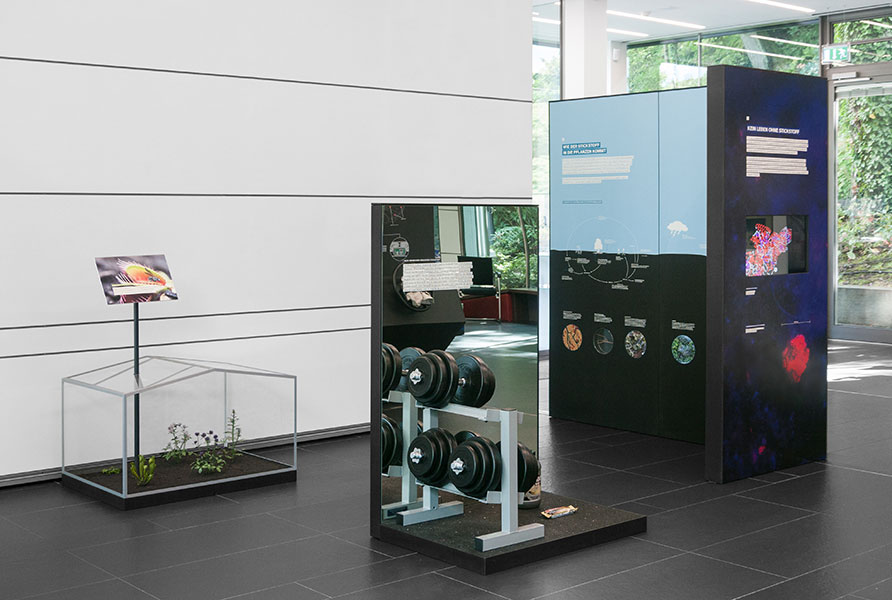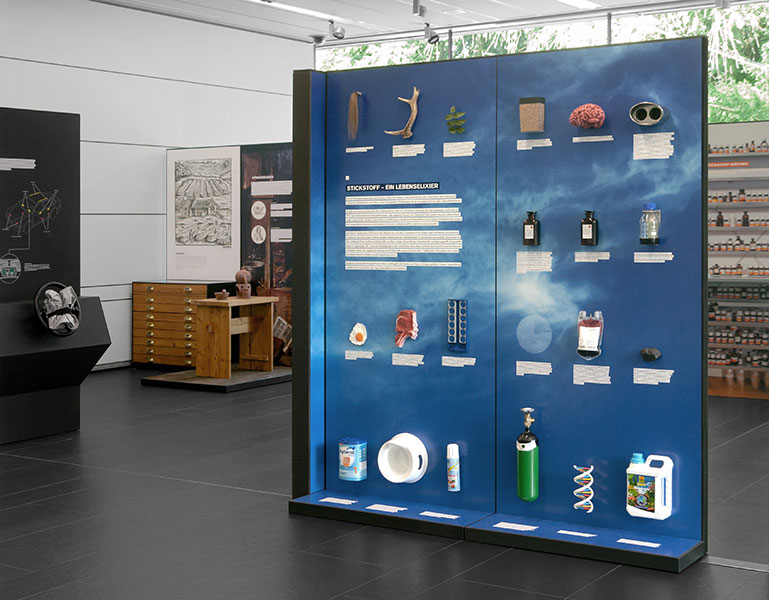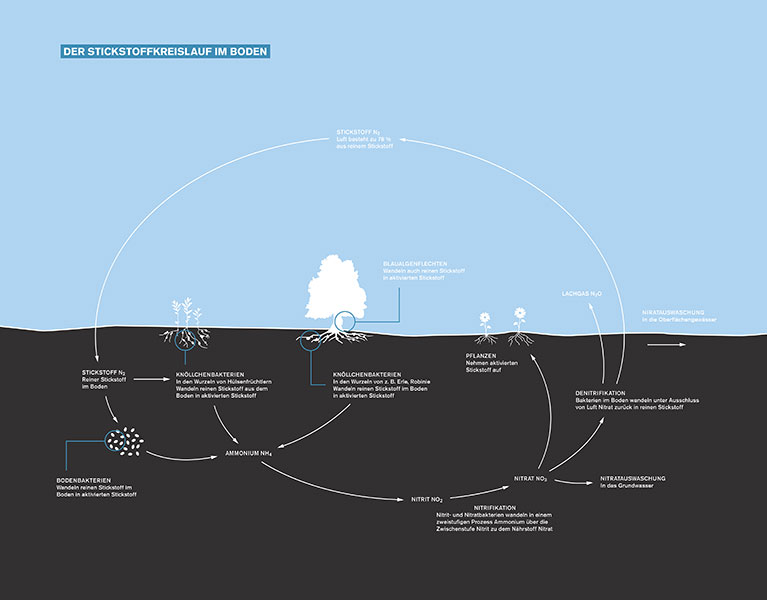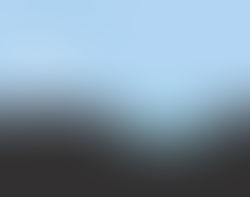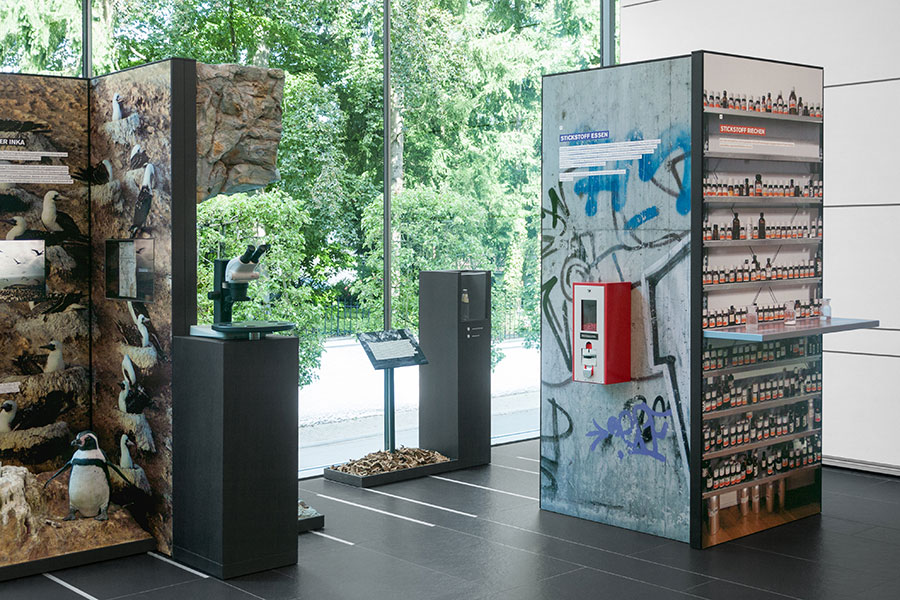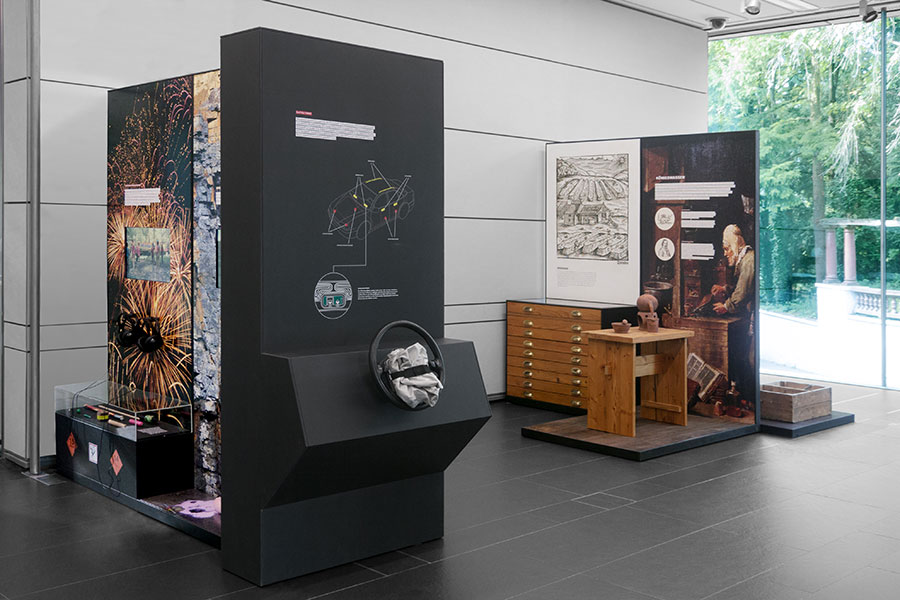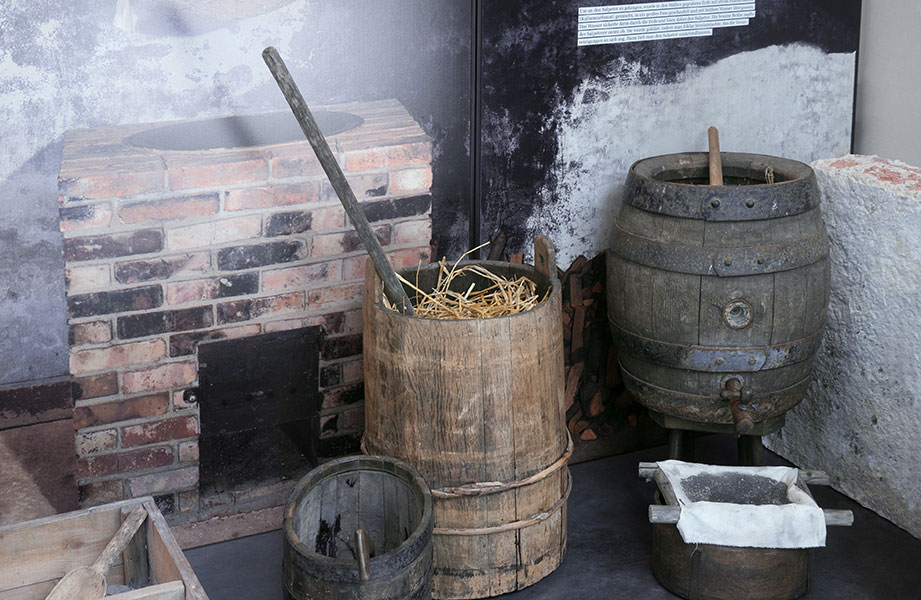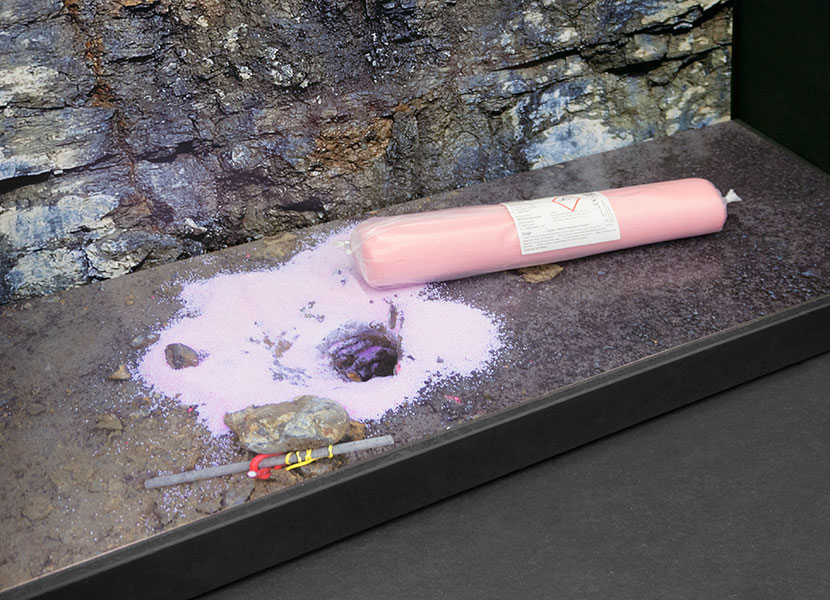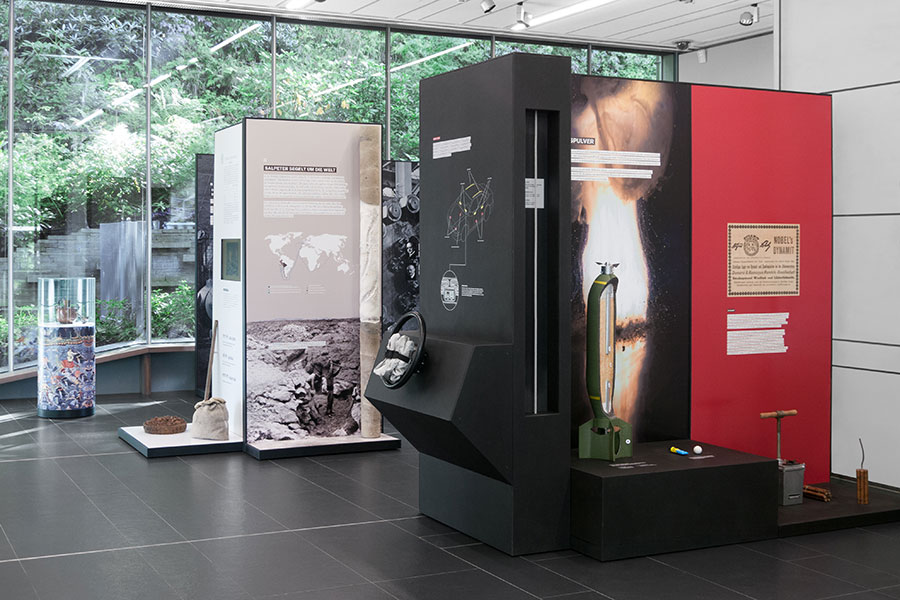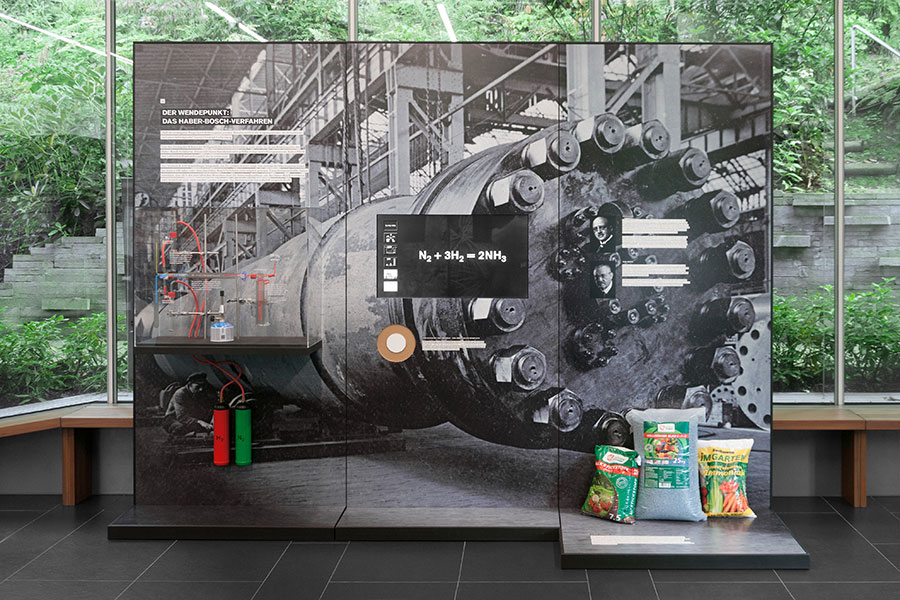Green Clover and Dynamite
The travelling exhibition “Green Clover and Dynamite – Nitrogen and Life” tells the story of nitrogen with its many facets, its biological significance, its ecological problems and its political explosiveness.
Medieval alchemist and saltpeterer workshops are contrasted attractively with modern high technology. Many hands-on exhibits make the material and its history tangible.
The exhibition shows that the history of nitrogen is increasingly shaped by humans. And the future will also depend on us, on our technical imagination and our political courage. While 100 years ago it was about overcoming boundaries, in the future it will also be about us setting ourselves boundaries: namely where the natural boundaries have been abolished.
Scientific team: Dr. Jens Soentgen, Dr. Claudia Schmidt, Sabine König, Jan Dübbers, Knut Völzke
Leise design team: Knut Völzke, Yamila Sauer, Johannes Ott, Hans Hess, Vicky Corakas
Client: WZU – Science Center for Environmental Research of the University of Augsburg and Carl Bosch Museum Heidelberg
Year of creation: 2013/14


Exhibition station in the Carl Bosch Museum Heidelberg.

The “Airbag Station” allows visitors to experience the properties of explosive nitrogen compounds in a playful way.
In the digital 3D model of the enzyme “nitrogenase” the tiny FeMo cofactor can be discovered, which is responsible for nitrogen binding.


Pure nitrogen in the air is odorless, but some nitrogen compounds have a sweet smell and others have a very strong smell.








The "Gur dynamite" invented by Alfred Nobel in 1866 was extremely successful as an explosive. It consists of a naturally occurring earth called diatomaceous earth, which, when soaked in nitroglycerin, contains around 18.5% nitrogen. The nitrogen content is bound in the molecule, but has a strong tendency to convert back into atmospheric nitrogen. This is one of the reasons why nitroglycerin is so explosive.
Exhibition stations:
Augsburg Natural History Museum
Carl Bosch Museum, Heidelberg
Federal Environment Agency, Dessau
Farm Equipment Museum, Ingolstadt
Ulm Natural History Education Center
Museum Baruther Glashütte
German Chemistry Museum Merseburg
Solothurn Natural History Museum
Museum Quintana, Künzing
The "Algae Station" shows that the use of artificial fertilizers has considerable side effects. In agriculture, much more is often applied to the fields than the plants can absorb. The overdose reaches rivers via the groundwater and ultimately the sea. The algae poison the water and when they die, they remove oxygen from it. Dead zones are created in the sea. Alongside overfishing, overfertilization is the greatest threat to ecosystems in lakes, rivers and the sea.





